The Eternal Wait:
Okunoin in Rain, Mist, and the Shadow of Basho
Yesterday I spent the whole day at Koyasan. Most of the time at Okunoin Cemetery. It is probably the most atmospheric place I have visited in my life. It is also a deeply emotional and spiritual experience that I am sure will be hard to capture with words and picture. Yet, I will try, otherwise I will forget.
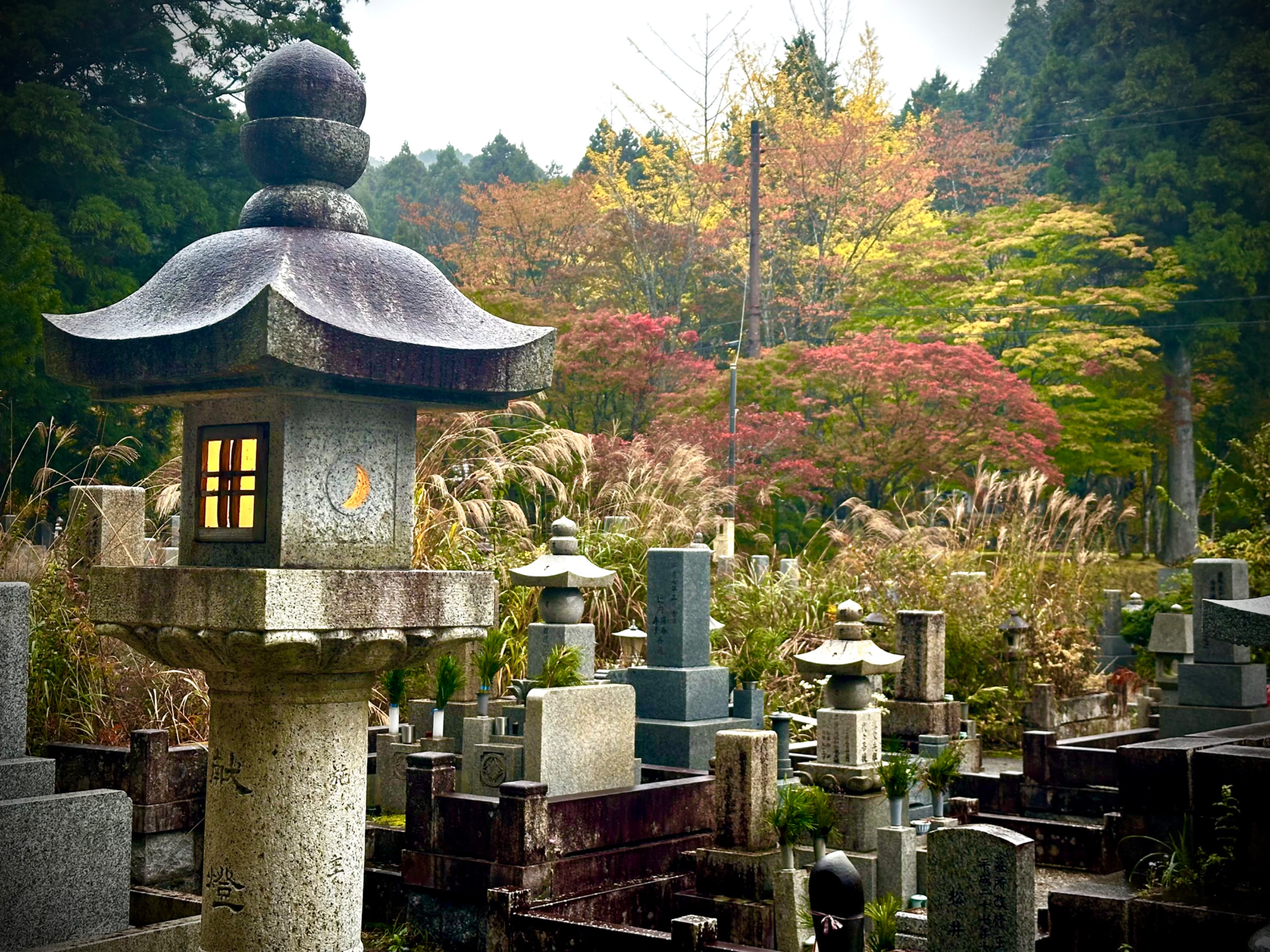
I went to Okunoin expecting a quiet walk through Japan's largest graveyard, but what I found was a profound spiritual pilgrimage. The entire mountain was shrouded in mist and a persistent, soft rain, transforming the two-kilometer path into something utterly otherworldly. Shaded by ancient cedars that scrape the sky, the air itself felt heavy with time and the weight of history.

The journey itself to Koyasan from Hashimoto was memorable. I have been able to catch the first train, which whisks me to Gokurakubashi Station, the end of the line for Koya-Nankai trains. From there I took a funicular cable car to Koyasan Bus station. The bus from there can take you all the way to Okunoin, but I got off a bit early into the town to start at the Ichinohashi bridge. There is a stone path, the one above, that takes you deep into the ancient cedar forest.

This is not a place of the dead, but of waiting spirits, gathered around the mausoleum of Kobo Daishi—a timeless sanctuary where the line between the sacred and the sublime dissolves. It's here, among the moss-covered tombstones of feudal lords and the memorial to the great haiku master Basho, that I realized I was walking not through a cemetery, but through an eternal moment.
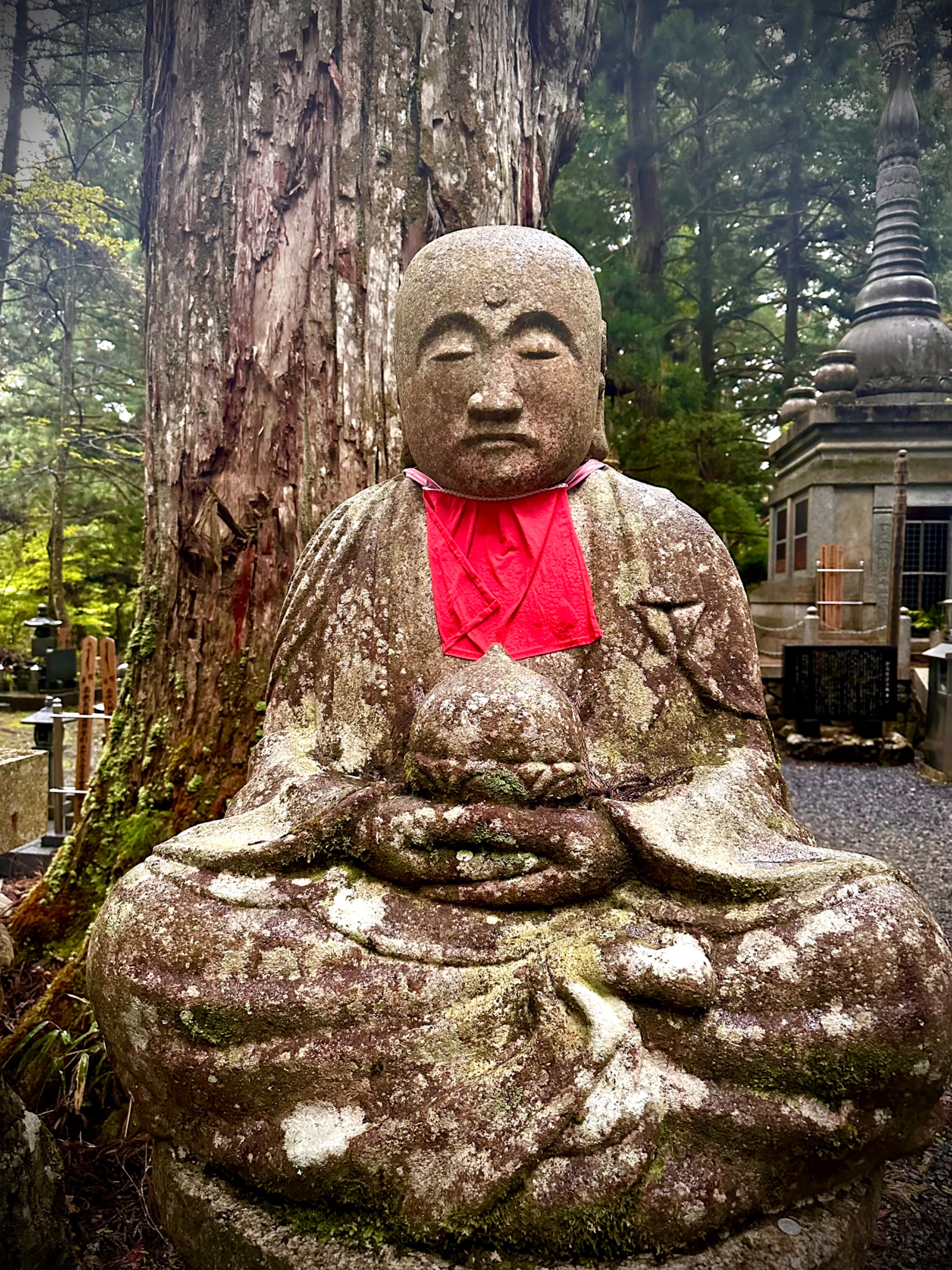
The solemn beauty of Okunoin is intensified by a belief that transcends the typical view of a graveyard. According to Shingon tradition, the founder, Kobo Daishi (Kūkai), did not truly die in 835. Instead, he entered a state of eternal meditation (Nyūjō) within his mausoleum, the Gobyo, at the end of the long path. He remains there, waiting for the arrival of Miroku Nyorai, or Maitraya as I know him being from India, the Buddha of the Future.
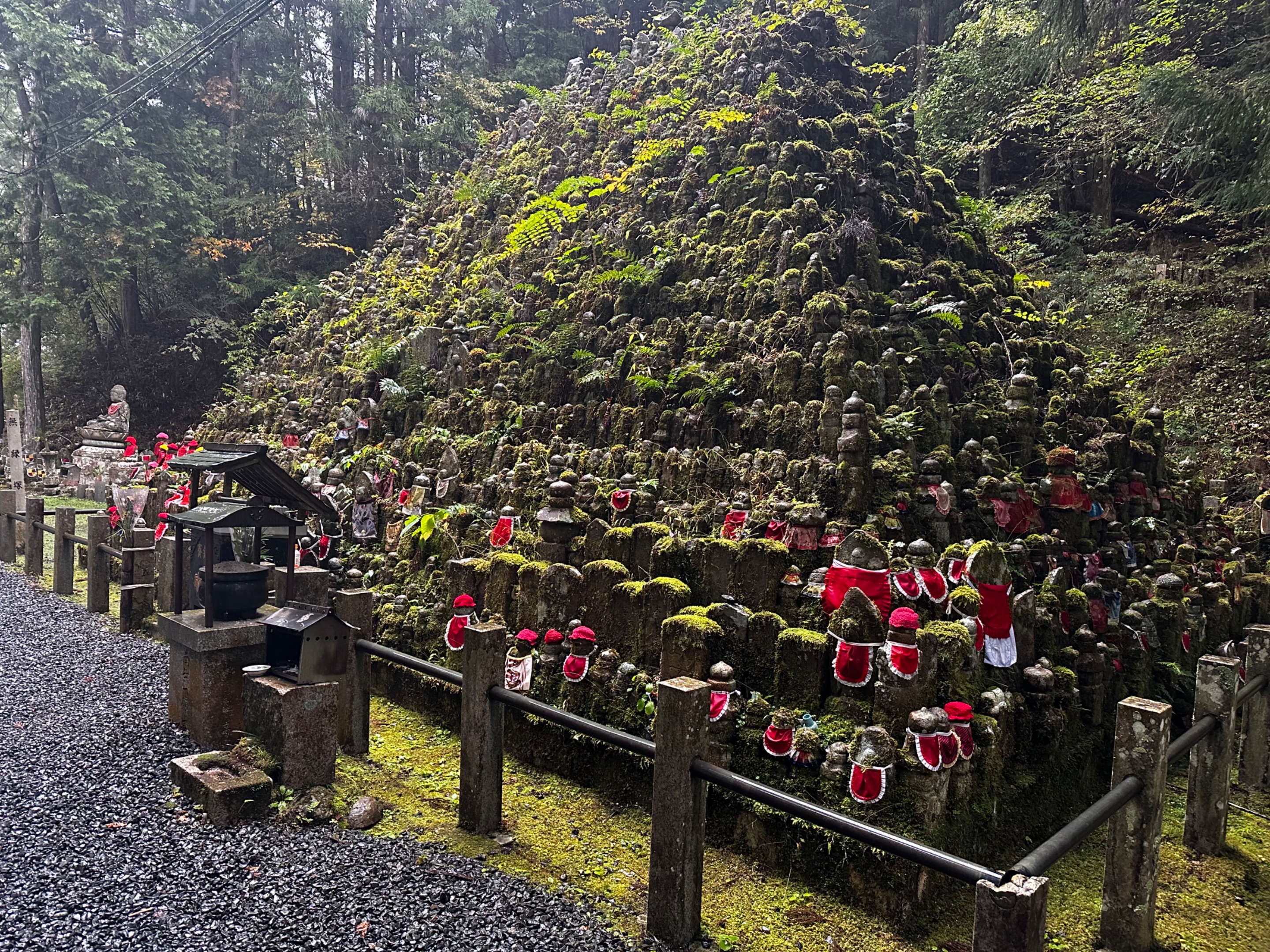
This is why the 200,000 monuments beneath the ancient cedars are not tombs for the dead; they are the resting places of "waiting spirits." Lot of these waiting spirits are children. There is a legend that moved me a lot. I will discuss it shortly, just remember this pyramidal mounds and small figurines with red woolen hat and red bonnets.

This profound perspective suggests that every individual—from the most powerful feudal lord to the simple commoner, and even the haiku master Basho—chose this sacred ground to be as close as possible to the Great Teacher. They are not spirits departed, but devoted disciples "sleeping" in proximity to Kobo Daishi, ready to rise and greet the future Buddha when he eventually arrives. This belief transforms the cemetery from a mournful place into a hopeful sanctuary, where all of history's figures are simply pausing until the dawn of enlightenment.
Basho Monument
I did find Basho's monument, it is a simple non-descriptive monument. Although a bit off topic, but it did remind be about Mughal emperor Babur. Babur expressed in his autobiography, the Baburnama, that he should be buried in a beloved garden in his favorite city, Kabul (Afghanistan), and that his grave should be humble, unadorned, and open to the sky.
Without the help of google map I won't be able to find it. While Matsuo Basho's main grave is located at Gichu-ji Temple in Otsu, Shiga Prefecture (as per his final request), a haiku monument dedicated to him is indeed a significant, evocative spot along the path in Okunoin.
ちちははの (Chichi haha no) しきりにこひし (Shikirini koishi) きじの聲 (Kiji no koe)
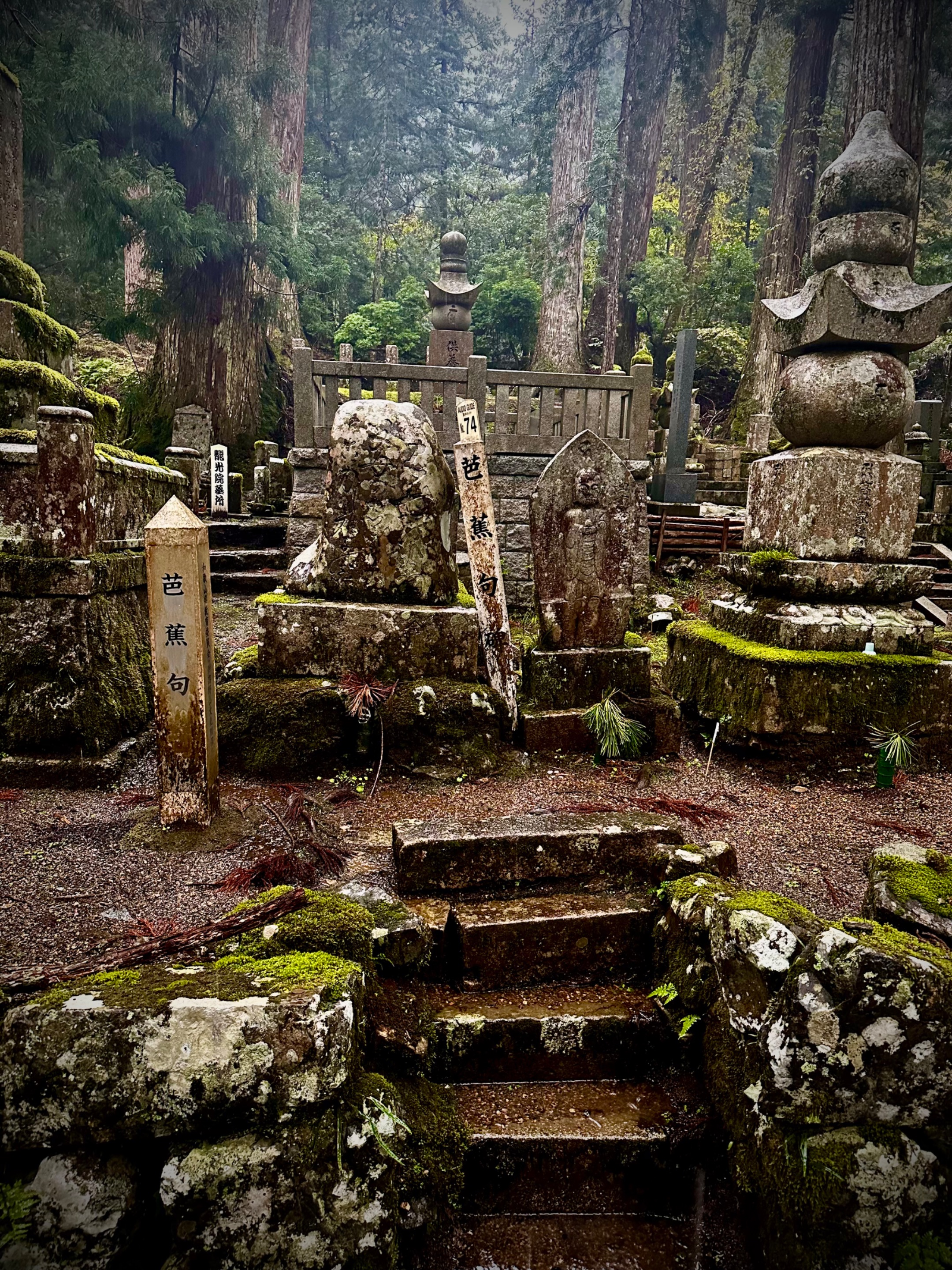
With intense longing for father and mother— the voice of a pheasant.
Jizo Bosatsu
That distinctive statue is called Jizo Bosatsu (or simply Jizo), and the small, child-like figures with red woolen hats and bibs are particularly prevalent at Koyasan's Okunoin cemetery. Jizo Bosatsu (地蔵菩薩), known in Sanskrit as Ksitigarbha Bodhisattva. In Japan, they are affectionately called Ojizo-sama (O-jizo-san). Jizo is one of the most beloved figures in Japanese Buddhism. Jizo helps children, especially those who died before their parents (including stillborn, miscarried, and aborted children).

According to a Japanese folk belief, children who die prematurely are forced to pile stones on the riverbed of the netherworld (Sai no Kawara) as penance, only for demons to knock the towers down. Jizo saves these children by hiding them in his robes. The bibs and hats are offered to keep the child's spirit warm and comfortable as Jizo guides them to the afterlife. They are essentially clothing for the child. The color red (aka) is traditionally associated in Japan with warding off illness, danger, and evil spirits/demons, making it the perfect color for a guardian deity. It is also the color often used for babies (aka-chan).
This bit of the story when I read it, it was difficult for me to not be emotional. I have two daughters and I miss them. The little woolen hat to keep them warm was too much for me. Anyways, enough of this! Fall has arrived in Okunoin!
There is Fall in the netherworld!
The eternal green of the ancient cedar forest was suddenly pierced by fire. Towering above the mossy, time-worn gravestones, maples erupted in shocking hues of scarlet and gold, illuminating the path. There is a beautiful vermillion bridge that was simply spectacular.

The vermilion bridge, traditionally a gate between the secular world and the sacred, seemed to fulfill its role visually under the downpour. Everything on the near side was damp and subdued, but the bridge itself and the brilliant trees that embraced it glowed with a kind of internal fire, marking the final, most vivid step into the heart of the sacred autumn forest.

The rain that fell continuously in Okunoin wasn't merely water; it felt like a collective, silent sorrow for all the souls resting there, yet paradoxically, it also amplified the beauty. And it was here, amidst the saturated brilliance of the vermilion bridge and the wet crimson leaves, that I felt the most profound connection to the figures of Jizō Bodhisattva.
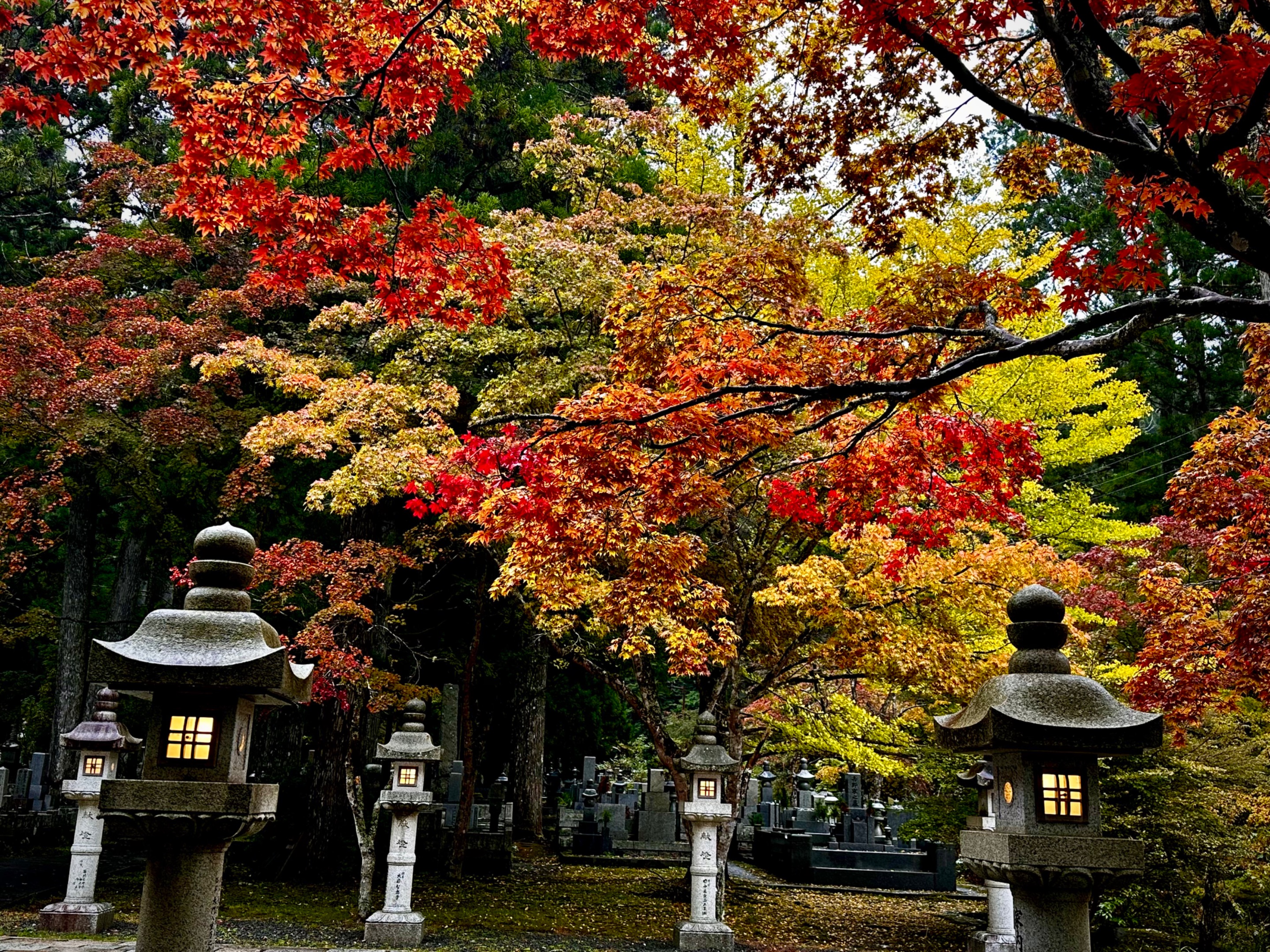
I left with the comforting sense that here, under the watchful eyes of Jizō, even the smallest, most vulnerable spirits are sheltered, embraced by the brilliant, quiet passing of the seasons. If this is not magical, I don't know what is!

